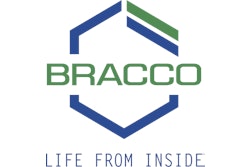A new study from the Netherlands has found that most patients preferred reduced-prep virtual colonoscopy (also known as CT colonography or CTC) over conventional optical colonoscopy.
The results weren't entirely expected, because one-fifth of patients ended up needing a colonoscopy referral for removal of clinically significant polyps. Nevertheless, study participants judged reduced-prep VC, both prep and procedure, as less burdensome than the conventional exam, a fact the authors hope could lead to greater compliance in colorectal cancer screening.
"Several studies have reported promising results for CT colonography with regard to image quality after a less extensive bowel preparation," wrote Dr. Sebastian Jensch and colleagues. Data on acceptance of these limited bowel preparation schemes are sparse, however (European Radiology, published online July 23, 2009, ahead of print). In fact, previous studies have swung both ways, depending on the cohort, the patients' experience, and what they were told about the exams.
The present study was conducted at Academic Medical Center and Onze Lieve Vrouwe Gasthuis, both in Amsterdam, and aimed to evaluate patient experience and preference for CTC with a limited bowel prep compared to optical colonoscopy with a cathartic preparation.
In total, 173 individuals (107 men, 66 women; mean age, 56) participated in the study. All had been scheduled for routine optical colonoscopy and were considered to be at increased risk of colorectal cancer due to a personal or family history of colorectal polyps or cancer. Patients were excluded for contraindications due to iodinated contrast, inflammatory bowel disease, or familial polyposis.
Researchers assessed patient opinions at different time points throughout the trial, with participants asked to complete a total of six questionnaires soliciting the following:
- Pretest views and post-test experience with the preps for CT colonography and optical colonoscopy
- Pretest views and post-test experience with CT colonography and optical colonoscopy procedures
- Preference for future exams
The pretest appraisals, completed two weeks before each exam, were based on individuals' previous knowledge and on information provided by the researchers about the exams. The post-test appraisals were based on a five-point scale (none, mild, moderate, severe, extreme) completed on the day of each exam. After participants had completed both colorectal exams, they were asked which exam and which exam prep was more burdensome, and which exam they would prefer for a future screening.
"Because adverse reactions to tests tend to temper in time and the attitude at a later time point will better reflect the attitude toward future screening, the preference was again assessed five weeks later at home," Jensch and his team wrote.
CT colonography was performed one to four weeks (mean, 25 days) before optical colonoscopy. The virtual colonoscopy preparation consisted of 180 mL diatrizoate meglumine, 80 mL barium sulfate suspension (Tagitol, Bracco Diagnostics, Princeton, NJ), and 30 mg bisacodyl. The colonoscopy preparation consisted of 4L polyethylene glycol solution (Klean-Prep, HelixBioPharma, Toronto).
Average time spent in the CTC exam room was 21 minutes (range, 13-48). The average duration of optical colonoscopy was 40 minutes (range, 12-90).
Prior to virtual colonoscopy, patients underwent automated insufflation with CO2 (ProtoCO2l, Bracco Diagnostics), and 13% of patients received 20 mg of glucagon hydrochloride (GlucaGen, Novo Nordisk, Bagsvaerd, Denmark), while 84% received butylscopolamine (Buscopan, Boehringer Ingelheim, Ingelheim, Germany). Prior to optical colonoscopy, 82% of participants received sedatives or analgesics -- 5 mg midazolam (Dormicum, Roche, Basel, Switzerland) or 0.5 mg alfentanil hydrochloride (Rapifen, AstraZeneca, London) -- upon request. Doses were increased until pain control was sufficient for the patient, Jensch and colleagues wrote.
The researchers compared participants' experiences and preference using Wilcoxon signed-rank and chi-squared tests. Logistic regression analysis was used to determine associations between experience and preferences for future exams.
Nearly all (94%) of the subjects reported diarrhea during the virtual colonoscopy prep, a side effect that 29% of respondents considered to be severely or extremely burdensome. Nevertheless, they considered the total burden for the CTC prep to be significantly lower than the colonoscopy prep. Only 9% (15/171) of participants rated the CTC prep as severely or extremely burdensome, compared with 59% for colonoscopy (p < 0.001).
Most participants found the CO2 insufflation to be the most burdensome part of CTC, followed by the breath-hold (25%, 39/159). The bisacodyl laxative was considered the most burdensome part of the CTC prep. During CTC, side effects such as abdominal pain, diarrhea, and flatulence were reported in 46%, 94%, and 42% of participants, respectively, and were noted to be severely or extremely burdensome in 23%, 29%, and 18%, respectively.
At least one polyp was found in 73% of optical colonoscopy participants, and the most burdensome aspect of that exam was the movement of the colonoscope (50%, 81/162), followed by CO2 insufflation (30%, 48/162). In previous studies CO2 was found to be less uncomfortable for patients than room air.
The total burden of the procedures was also significantly lower for virtual colonoscopy "because participants experienced significantly more pain and discomfort during the optical colonoscopy procedure (all p-values < 0.001)." Embarrassment was not a factor, however, expressed as none or mild by 97% of CTC and 93% of optical colonoscopy participants, with no statistically significant difference.
Participants preferred virtual colonoscopy over optical colonoscopy as their next exam of choice, both directly after optical colonoscopy (76%) and five weeks later at home (69%) (p < 0.0001).
"With regard to associations between preference and patient-related factors, recent symptoms of colorectal cancer was a positive determinant of a preference for optical colonoscopy directly after optical colonoscopy" (p = 0.03), the authors wrote, "but five weeks later at home this association was no longer present. With regard to participants' experience parameters, a burdensome bowel preparation for CT colonography (p = 0.01) and a painful CT colonography procedure (p = 0.03) were independent determinants of optical colonoscopy preference."
Similarly, a burdensome optical colonoscopy preparation (odds ratio, 0.40; p = 0.05) and pain at optical colonoscopy (odds ratio, 0.10; p = 0.01) were associated with a preference for CTC. And after five weeks, the same determinants of experience were still associated with the same preferences for future exams (all p-values ≤ 0.04).
"In accordance with previous studies, we found a better patient tolerance for the limited preparation versus the cathartic preparation," the group wrote. "However, in our study almost all participants (158/168) experienced diarrhea during the CT colonography preparation and this side effect was considered very serious." The finding that CO2 insufflation was the most burdensome part of the CTC exam is in line with previous studies.
The most important limitation of the study was the use of polyethylene glycol for colonoscopy, which requires patients to ingest large quantities of the mixture, although sodium phosphate prep (acceptable for most patients) performs as well and is considered easier for patients. Also of significance, patients were told that limited-prep VC was as accurate as colonoscopy, when in fact full-prep optical colonoscopy is likely to be more accurate compared to the limited-prep VC exam. Finally, the cohort of surveillance patients was willing to undergo both exams, which may not be applicable to a general screening population.
"An apparent preference for CT colonography was observed in this population of individuals at increased risk of colorectal cancer," the authors wrote. "Therefore, we believe that CT colonography with a limited bowel preparation can be of value in increased participation rates in screening programs for colorectal cancer."
By Eric Barnes
AuntMinnie.com staff writer
August 27, 2009
Related Reading
Higher VC laxative dose burdens patients, doesn't improve reads, July 16, 2008
New low-volume bowel cleansing solution effective, more acceptable, May 9, 2008
VC CAD finds polyps in prepped or unprepped patients, May 6, 2008
Patient survey suggests preference for minimal-prep VC, June 20, 2007
Minimal-prep VC preferred over colonoscopy, February 23, 2005
Copyright © 2009 AuntMinnie.com




















